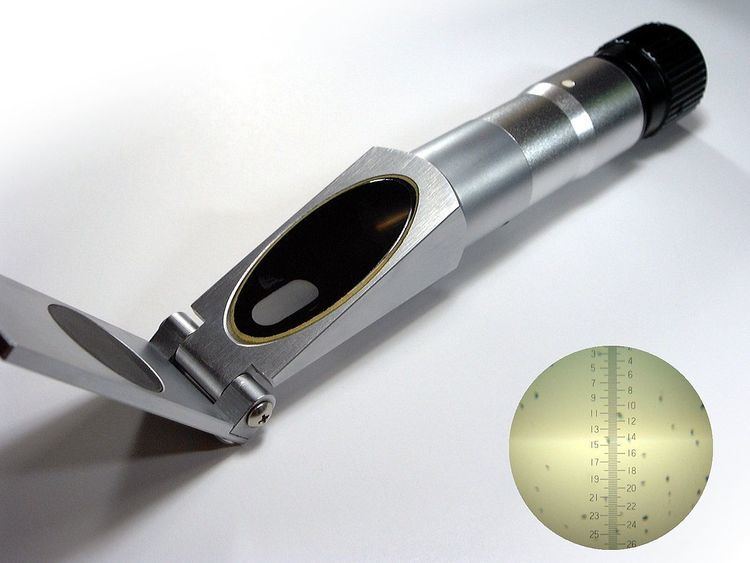 | ||
A traditional handheld refractometer is an analog instrument for measuring a liquid's refractive index. It works on the critical angle principle by which lenses and prisms project a shadow line onto a small glass reticle inside the instrument, which is then viewed by the user through a magnifying eyepiece.
In use, a sample is placed between a measuring prism and a small cover plate. Light traveling through the sample is either passed through to the reticle or totally internally reflected. The net effect is that a shadow line forms between the illuminated area and the dark area. It is where this shadow line crosses the scale that a reading is taken. Because refractive index is very temperature dependent, it is important to use a refractometer with automatic temperature compensation. Compensation is accomplished through the use of a small bi-metallic strip that moves a lens or prism in response to temperature changes. There are many types of refractometers and the most common types are Abbe's refractometer, Pulfrich refractometer, Immersion refractometer.
